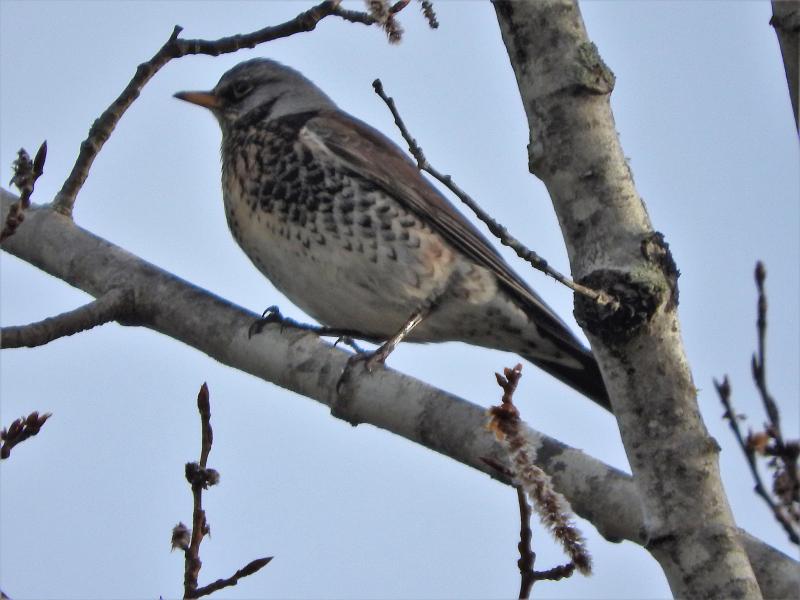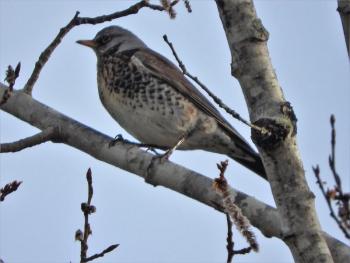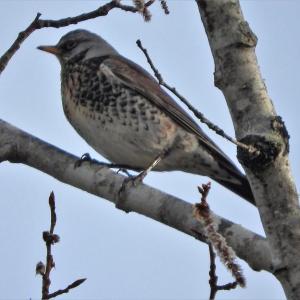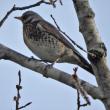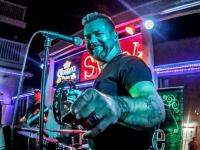When the Fieldfare Came to Maine
We were in Florida when the news broke over the birding listserv: a vermilion flycatcher had been seen on Hog Island, amazingly, via the popular osprey nest web cam located there. Maine had only one previous record of vermilion flycatcher and that one had not been confirmed by photographs or video. As the name suggest, the male vermilion flycatcher is bright red, with dark wings, back, and tail. The species occurs across South America and Central America, reaching its northern range limit in the southwestern U.S. in the border states from California to Texas. Maine birders raced to Audubon’s Todd Wildlife Sanctuary in Bremen to set up spotting scopes to look across the 300 yards of ocean that separates Hog Island from the mainland; sure enough, a few of them spotted the bird flitting around the buildings there on the northern tip of the island.
We were not among them.
Who can complain about being in Florida where there are a wealth of amazing birds to see? We saw swallow-tailed kites, sandhill cranes, wood storks, white ibises, and yellow-throated warblers. But we kept alive a glimmer of hope that the vermilion flycatcher back home in Maine might just stay put long enough for us to see it when we returned.
Alas, that was not to be. Apparently the bird left within a day or two of being seen.
Incredibly, though, the birding listserve heated up again. This time it was an even more surprising bird, a fieldfare—a robin-like Eurasian bird that was spotted by resident birder Jeff Cherry in Newcastle.
And we were still in Florida.
This time we were lucky. The fieldfare decided to stay in the same area, and over the ensuing days, hundreds of birders came to sit and wait and hope for a glimpse of the rather secretive bird. Although we don’t know exactly how many people came from afar to see it, we do know that it included birders from New Jersey, Connecticut, and other parts of New England. The bird stayed long enough to give us several chances to try to see it, and one of those times, Jeff was with a sighting of bird hopping around in a close field with a flock of robins (Allison had a prior obligation that day—a trip to Scandinavia, where the species breed, may be required to make up for this injustice).
Fieldfares look and act very much like our familiar American robin. They nest across northern Europe and Russia and move south in winter to southern Europe and Great Britain (where they are very rare breeders in the North). Oddly, some segment of the fieldfare population migrates to Iceland for the winter, and there has been a fluctuating breeding population in Greenland, though so few ornithologists and birders visit there that the status of the species in Greenland in recent years seems a bit murky.
Fieldfares are still very rare in North America but are being spotted with increasing frequency. There are now dozens of records from the past 30 years or so including from Maine’s neighbors in Canada. We have read of one that visited a backyard feeder in Nova Scotia in 2015 and one in Massachusetts in 2013, and there are probably more.
If trends continue it would not be surprising to find that more fieldfares make their way to Maine in coming years. If you see an odd looking robin, better check it carefully!
Jeffrey V. Wells, Ph.D., is a Fellow of the Cornell Lab of Ornithology. Dr. Wells is one of the nation's leading bird experts and conservation biologists and author of the “Birder’s Conservation Handbook.” His grandfather, the late John Chase, was a columnist for the Boothbay Register for many years. Allison Childs Wells, formerly of the Cornell Lab of Ornithology, is a senior director at the Natural Resources Council of Maine, a nonprofit membership organization working statewide to protect the nature of Maine. Both are widely published natural history writers and are the authors of the book, “Maine’s Favorite Birds.”
Event Date
Address
United States

